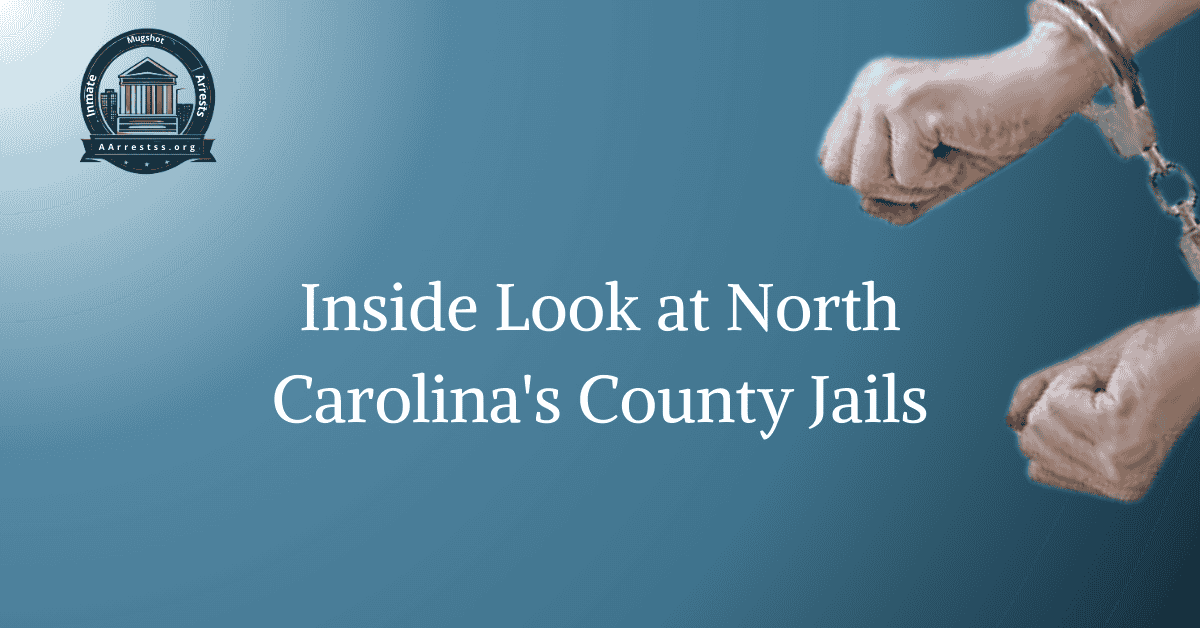Inside Look at North Carolina’s County Jails
North Carolina’s county jails provide a fascinating glimpse into the state’s criminal justice system. From the small rural facilities to the larger urban complexes, each jail has its own unique challenges and characteristics. In this article, we will take a closer look at what goes on behind the walls of these jails, from the daily routines of the inmates to the efforts of the staff to maintain order and safety. Get ready for an inside look at North Carolina’s county jails.
Daily Routines of Inmates
One important aspect of North Carolina’s county jails is the daily routines that inmates follow. These routines are designed to provide structure and maintain order within the facilities. Inmates typically have set times for meals, recreation, and various activities. This paragraph will provide a detailed explanation of the daily routines and how they contribute to the functioning of the jails.
Efforts of Staff to Maintain Order and Safety
The staff in North Carolina’s county jails play a crucial role in maintaining order and safety within the facilities. This paragraph will explore the various measures taken by the staff, including regular patrols, inmate supervision, and the implementation of security protocols. It will highlight the challenges faced by the staff and the strategies employed to ensure the well-being of both inmates and staff members.
Challenges in Small Rural Jails
While each county jail in North Carolina has its own unique challenges, small rural jails face specific issues that differ from larger urban complexes. This paragraph will discuss the challenges faced by small rural jails, such as limited resources, staffing constraints, and the need to provide specialized services to a smaller inmate population. It will provide insights into how these challenges are addressed and overcome.
Characteristics of Larger Urban Complexes
In contrast to small rural jails, larger urban complexes have their own distinct characteristics. This paragraph will highlight the features of these facilities, such as higher inmate populations, more extensive security measures, and the presence of specialized units for different categories of inmates. It will delve into the unique challenges faced by larger urban complexes and the strategies employed to address them.
Safety Measures and Protocols
Ensuring the safety of both inmates and staff is a top priority in North Carolina’s county jails. This paragraph will delve into the safety measures and protocols in place, including the use of surveillance systems, regular inspections, and emergency response plans. It will explain how these measures contribute to creating a secure environment within the jails.
Programs and Rehabilitation Efforts
In addition to maintaining order and safety, North Carolina’s county jails also strive to provide programs and rehabilitation efforts for inmates. This paragraph will explore the various programs offered, such as educational classes, vocational training, and substance abuse counseling. It will highlight the importance of these initiatives in helping inmates reintegrate into society upon their release.
FAQs
What is the current state of North Carolina’s county jails?
North Carolina’s county jails are currently facing overcrowding issues due to an increase in the number of inmates. This has led to limited resources, inadequate facilities, and challenges in providing proper care and rehabilitation programs for the inmates.
What are the main reasons for overcrowding in North Carolina’s county jails?
The main reasons for overcrowding in North Carolina’s county jails include a rise in crime rates, lengthy court processes, limited alternatives to incarceration, and the lack of comprehensive mental health and substance abuse treatment programs.
How does overcrowding affect the inmates in North Carolina’s county jails?
Overcrowding in North Carolina’s county jails leads to increased tension among inmates, a higher risk of violence, limited access to educational and vocational programs, and difficulties in providing proper healthcare and mental health services to all inmates.
What are the potential solutions to address overcrowding in North Carolina’s county jails?
Potential solutions to address overcrowding in North Carolina’s county jails include implementing alternative sentencing programs, expanding pre-trial diversion programs, investing in community-based rehabilitation programs, and improving access to mental health and substance abuse treatment services.
Are there any initiatives in place to tackle the issue of overcrowding in North Carolina’s county jails?
Yes, North Carolina has initiated various programs and policies to address the issue of overcrowding in county jails. These include implementing risk assessment tools for pre-trial release, expanding electronic monitoring programs, and investing in diversion programs for non-violent offenders.
What are the long-term benefits of addressing overcrowding in North Carolina’s county jails?
Addressing overcrowding in North Carolina’s county jails can lead to improved inmate rehabilitation, reduced recidivism rates, cost savings for the criminal justice system, and the promotion of a fair and effective criminal justice system in the state.






